The phenomenon of cyberthreats: cyber-security implications for the Colombian national Army
Abstract
The objective of this work is to analyse the cyber threats with the capacity to affect the information security of the Colombian National Army between January 2019 and June 2020, putting national interests and, therefore, national defence at risk. For this purpose, primary information sources have been used, supported by qualitative research techniques, obtained from scientific and academic documents, where the levels of risks derived from cyber attacks were evaluated, establishing the causes that compromised the integrity of information security and the impact generated in the institution. Therefore, it is imperative to integrate cybernetic capacities and specialties with the participation of actors from the private and public, civilian and military sectors, to counteract the vulnerabilities to which the Colombian National Army is exposed with one of its main strategic assets, "Information".
Downloads
References
Asociación Nacional de Empresarios de Colombia. (2017). Encuesta de Transformación Digital. ANDI. Obtenido de http://www.andi.com.co/Uploads/Encuesta%20Transformaci%C3%B3n%20Digital%20ANDI.pdf
Asociación Nacional de Empresarios de Colombia. (2019). Informe de la Encuesta de Transformación Digital. ANDI. Obtenido de http://www.andi.com.co/Uploads/ANALISIS%20-%20ENCUESTA%20DE%20TRANSFORMACI%C3%93N%20DIGITAL%202019%20-%20ANDI.pdf
Bautista, F. (29 de octubre de 2019). Tendencias Cibercrimen Colombia 2019-2020. Obtenido de Tendencias Cibercrimen Colombia 2019-2020: file:///D:/Downloads/informe-tendencias-cibercrimen_compressed-3.pdf
Calle, L. (2016). Metodologías para hacer la revisión de la literatura de una investigación. Obtenido de https://www.researchgate.net/publication/301748735_Metodologias_para_hacer_la_revision_de_literatura_de_una_investigacion.
Cardona Mendoza, S. L. (2016). La interdependencia compleja en los procesos de integración económica: análisis de las estrategias de los BRICS en la región suramericana, caso UNASUR en el periodo de 2009 a 2014. Negocios y Relaciones internacionales.
Carrillo, G., Brayham, A., & Bastidas, M. (2019). Caracterización de la modalidad delictiva “Phishing” en Colombia: avances y retos actuales para la Policía Nacional. Repositorio Educativo Institucional.
Ceballos, A. (2020). Tendencias Cibercrimen Colombia 2019-2020. Obtenido de Tendencias Cibercrimen Colombia 2019-2020: file:///D:/Downloads/informe- tendencias-cibercrimen_compressed-3.pdf
Centro superior de estudios de la defensa nacional. (febrero de 2012). https://publicaciones.defensa.gob.es. Obtenido de https://publicaciones.defensa.gob.es/media/downloadable/files/links/m/o/monografia_126.pdf
Conpes 3854. (2016). Política Nacional de Seguridad Digital. Departamento Nacional de Planeación. Obtenido de https://bit.ly/3brazVR
Conpes 3975. (2019). Política Nacional para la Transformación Digital e Inteligencia Artificial. Departamento Nacional de Planeación. Obtenido de https://www.mintic.gov.co/portal/604/articles-107147_recurso_1.pdf
Conpes 3995. (2020). Política Nacional de Confianza y Seguridad Digital. Departamento Nacional de Planeación. Obtenido de https://colaboracion.dnp.gov.co/CDT/Conpes/Econ%C3%B3micos/3995.pdf
Cortes, A. (2018). Amenazas Persistentes Avanzadas. Obtenido de Amenazas Persistentes Avanzadas: http://35.227.45.16/bitstream/handle/20.500.12277/2677/Trabajo%20de%20grado.pdf?sequence=1&isAllowed=y
Council of Europe Portal. (2019). Obtenido de https://www.coe.int/en/web/conventions/full-list/-/conventions/treaty/185/signatures?p_auth=S5PssuRE
Cujabante, x., Bahamón M, M., Prieto, J., & Quiroga. (2020). Ciberseguridad y ciberdefensa en Colombia: un posible modelo a seguir en las relaciones cívico- militares. Bogotá: Revista Científica General José María Córdova.
Dammert L, N. C. (2019). “ENFRENTANDO LAS CIBERAMENAZAS: ESTRATEGIAS NACIONALES DE CIBERSEGURIDAD EN EL CONO SUR. Seguridad, ciencia y ciencia.
Departamento Nacional de Planeación. (2019). Política Nacional para la Transformación Digital e Inteligencia Artificial. Obtenido de https://www.mintic.gov.co/portal/604/articles-107147_recurso_1.pdf
Díaz, J. R. (2016). Ciberamenazas: ¿el terrorismo del futuro? Instituto español de estudios estratégicos.
Fernández. (2017). Análisis de las ciberamenazas. Dialnet.
Guguyener, A. (2017). Understanding the Vulnerabilities of Critical Energy Infrastructure to Cyber Terrorism and Threats: How to Secure Our Energy Systems (Vol. 48). Strategic Cyber Defense. doi:org/10.3233/978-1-61499-771-9-74
ICONTEC. (18 de julio de 2018). NTC-ISO 31000. Bogotá, Colombia.
ICONTEC. (18 de julio de 2018). NTC-ISO 31000. Bogotá, Colombia. información, A. d. (2019). Actores de amenazas y tipos de ataques. RESERVA DE DERECHOS.
Ionos. (30 de abril de 2020). Digital Guide. Obtenido de Digital Guide: https://www.ionos.es/digitalguide/correo-electronico/seguridad-correo-electronico/spear-phishing/
ISACA. (Nov. de 2019). CyberSecurity GRC Services. Obtenido de CyberSecurity GRC Services: file:///D:/Downloads/CONSULTA%20ARTICULO/state-of-cybersecurity-2019-part-2_res_eng_0619.pdf
ISACA. (2019). STATE OF CYBERSECURITY 2019: CURRENT TRENDS IN ATTACKS, AWARENESS AND GOVERNANCE. Schaumburg, IL: ISACA.
ISACA. (2020). State of Cybersecurity 2020. All Rights Reserved.
ISACA. (2020). State of Cybersecurity 2020. Schaumburg, IL: ISACA.
ITU.IN. (16 de mayo de 2011). ITU Comprometida para conectar al mundo. Obtenido de http://www.itu.int/net/pressoffice/press_releases/2011/17-es.aspx#.YGyX59LPzIU
Karpesky. (2020). https://latam.kaspersky.com. Obtenido de https://latam.kaspersky.com: https://latam.kaspersky.com/resource-center/definitions/spear-phishing
Kaspersky. (2020). https://latam.kaspersky.com. Obtenido de https://latam.kaspersky.com/resource-center/definitions/what-is-ransomware
Maroto, J. P. (2009). El ciberespionaje y la ciberseguridad. La Rioja: Universidad de la Rioja.
Martínez, R. O. (2009). Ciberterrorismo. Alfa Redi, Revista de derecho informático.
MinTIC. (3 de octubre de 2020). Ministerio de Tecnologías y Comunicaciones. Obtenido de Ministerio de Tecnologías y Comunicaciones: https://www.mintic.gov.co/portal/inicio/18798:Filtraci-n-de-datos
Moral, L. G. (2014). Curso de Ciberseguridad y Hacking Ético. Sevilla: Punto Rojo Libros.
Morgenthau, H. (1948). Politics among nation. McGraw-Hill Education. NETSCOUT. (2019). https://horizon.netscout.com. Obtenido de https://horizon.netscout.com/?
Pirateque Perdomo, P. (2021). Comunicaciones estratégicas (Stratcom) y Social Media: Su aplicabilidad para el mundo Postwesfaliano. https://esici.edu.co/wp-content/uploads/2022/01/4.-Comunicaciones-estrategicas-enero-2062.pdf
Pirateque Perdomo, P., & Martínez Cruz, D. A. (2022). Espacio exterior: el nuevo tablero de cooperación entre Estados Unidos y Rusia, el papel dominante de las empresas y su desarrollo en Colombia. Perspectivas en Inteligencia, 13(22), 155–173. https://doi.org/10.47961/2145194X.277
Plan Nacional de Desarrollo. (2018). Pacto por Colombia, Pacto por la Equidad. Departamento Nacional de Planeación. Obtenido de https://colaboracion.dnp.gov.co/CDT/Prensa/Resumen-PND2018-2022-final.pdf
Política de Defensa y Seguridad. (2019). Legalidad el Emprendimiento y la Equidad. Ministerio de Defensa Nacional. Obtenido de https://colaboracion.dnp.gov.co/CDT/Prensa/Resumen-PND2018-2022-final.pdf
Política de Gobierno Digital. (2018). Manual de Gobierno Digital. Ministerio de Tecnologías de la Información y las Comunicaciones.
Realpe, M. E. (2012). Amenazas Cibernéticas a la Seguridad y Defensa Nacional. Reflexiones y perspectivas en Colombia.
SAFE. (2019). TENDENCIAS CIBERCRIMEN COLOMBIA 2019 - 2020. Bogotá: SAFE.
Santiago, I. V. (18 de enero de 2018). https://seguridad.cicese.mx. Obtenido de https://seguridad.cicese.mx/alerta/335/Hacker,-Crackers,-Lamers,-Script-Kiddies-y-Phreakers-Quienes-son
Scopus. (2020). Scopus Preview. Obtenido de https://www-scopus-com.ezproxy.umng.edu.co/term/analyzer.uri?sid=e3803c7c100b443e837ed7b4f66d8e6a&origin=resultslist
Studies, C. F. (2013). The economic impact of cybercrime and cyberspionage. McAfee. Trigo, S. (2017). Ransomware Seguridad, Investigación y Tareas Forenses. Argentina: Ministerio Publico Buenos Aires.
Universidad Libre. (10 de junio de 2015). http://www.unilibre.edu.co. Obtenido de http://www.unilibre.edu.co/bogota/ul/noticias/noticias-universitarias/152-seguridad-de-la-información
Vera, O. (2009). Cómo escribir artículos de revisión. Revista Médica de la Paz, 15. Obtenido de http://www.scielo.org.bo/scielo.php?script=sci_arttext&pid=S1726-89582009000100010
Waever, O. (1999). Securitization and Desecuritization. On security, 46-86.
Zeinab Karake, R. A. (2019). Enforcing Cybersecurity in Developing and Emerging Economies. Massachusetts: Edward Elgar Publishing Limited. https://doi.org/10.4337/9781785361333 PMCid:PMC6956835

This work is licensed under a Creative Commons Attribution-NonCommercial-NoDerivatives 4.0 International License.













